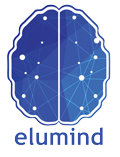Neurofeedback for Depressive disorder
Jane was beyond discouraged. She had been diagnosed with Major Depressive Disorder a year ago. Her doctor prescribed antidepressants, but none of them proved effective. Besides, some of them had horrible side effects. She was about to give up; life was not worth living this way.
Then Jane read about Neurofeedback and its positive effect on Depressive disorder. She decided to give it a try and was amazed at the results.
The Great Disabler
The World Health Organization has called depression “the leading cause of disability worldwide,” with 300 million individuals suffering across the globe. There are treatments for depression, but up to one-third—one hundred million people—don’t respond to treatment, even after trying various antidepressant medications. This is known as TRD, or Treatment Resistant Depression. For these folks, there are few options left.
But Neurofeedback is one remaining option that works. Decades of study and research have been done on the effect of Neurofeedback on Depressive disorder and, as Jane discovered, the results are amazing and give hope to those with TRD.
This is your brain on Depression
A number of years ago, a television commercial showed an egg frying and sizzling in a hot pan. The caption was, “This is your brain on drugs.”
A similar commercial for Depressive disorder could show an ominous grey cloud in a darkened sky, pouring unceasing, cold, hopelessly miserable rain. That’s how Jane felt all the time. Even when happy events happened around her, she felt a constant undercurrent of sadness and despair that just wouldn’t go away.
Your Brain
Different parts of your brain are responsible for different functions.
Note that emotional reactions are seated in the frontal lobe (the yellow left part of the brain in the diagram above).
When seen from the top, the brain looks something like the picture below. Note that there are two halves, or “hemispheres,” of the brain. In a minute, you’ll see why this is important…
(By the way, no one’s brain is this colorful!)
Brainwaves
Your brain is a very complex organ made up of billions of neurons with trillions of connections. The communication between neurons is at the root of all your thoughts, behaviors, and emotions. Messages are relayed between neurons in fractions of a second by electrical impulses.
Brainwaves are produced by synchronized electrical pulses of masses of neurons communicating with each other. Brainwaves travel at different speeds, or frequencies, in the brain, and are associated with different brain states, as seen below.
What does this have to do with Depression?
Different brainwaves have been shown to be associated with different moods. Scientists can see your brainwaves by placing sensors, or electrodes, on your scalp and connecting them to a computer. The electrical activity in various parts of your brain will show up on the screen.
Your mood is happier when the left frontal area of your brain is more active than the right frontal area. When the right frontal area is more active than the left, your mood is much worse.
Here’s where Neurofeedback comes in…
Neurofeedback for Depressive disorder
A gym for your brain
When you want to get physically fit, you exercise various parts of your body. Positive results don’t show up after your first visit to the gym. It takes time and consistent effort to develop the body you want.
Neurofeedback is a way to help your brain become “fit” through intensive brain training exercises. The process is simple, painless, and non-invasive. It’s just learning! You learn to change the activity of your brainwaves through feedback and practice.
Here’s the procedure:
A trained clinician will attach electrodes to your scalp. No electricity will go into your head—the electrodes will simply measure your brain’s electrical activity and give you feedback that you can see on the computer screen.
You’ll go through various mental exercises, and the screen will give you instantaneous information about any changes you have been able to make in your brain’s electrical activity. When you meet the goal the clinician has set for you, you’ll get a signal.
Neurofeedback allows you to change the “mood network” in your brain. Studies show that Neurofeedback for depression results in more positive thinking patterns and a reduction in the negative ways of thinking associated with Depressive disorder.
Just as reshaping your body will take more than a few sessions in the gym, reshaping your brain will take numerous sessions too. Some people feel relief after 15–20 half-hour sessions; others may take 40 or 50 sessions to feel a difference. It just depends on each individual’s brain.
Real-Life stories
The following accounts of John and Mary come from The Neurodevelopment Center, Inc., in Providence, Rhode Island, USA.
“John had a longstanding history of problems with mood. Like most people with Depressive disorder, John also suffered from anxiety. He had been in psychotherapy several times before and was taking three medications when he began Neurofeedback. We measured his level of depression and anxiety with the Beck Depression and Anxiety Inventories—well-established psychological tests. His scores showed moderate depression and a mild level of anxiety, even with the three medications. After ten weeks and 20 sessions of Neurofeedback, we repeated these tests. By this time, he had stopped all three medications. His scores showed very significant improvement in mood and anxiety. After his brief course of Neurofeedback training, he showed minimal signs of Depressive disorder and anxiety—this time without medication. John has visited us periodically over the course of three years. He continues to do very well, with no return of symptoms.”
“Mary was a fifty-five-year-old woman with severe depression and obsessive-compulsive disorder (OCD). She was treated for many years with medication and cognitive behavioral therapy. In fact, her treatment was overseen by one of the world’s leading experts in OCD. But years of this treatment regimen had yielded very little benefit. She came to us extremely discouraged, more or less hopeless, and largely unable to function. We used the Beck Depression Inventory (BDI), a worldwide standard, to measure her depressive disorder severity before and after 20 neurofeedback sessions. Mary’s mood had improved markedly. Her scores on the BDI decreased from a severe level score of 38 to a score of just 1! Her OCD symptoms diminished also…
“It is now five years later. Mary [does Neurofeedback training] a couple of times a month. This small amount of training maintains her with a positive mood and with very little anxiety.”
The Upshot
There is ample scientific proof, going back decades, that Neurofeedback works to alleviate major depressive disorder—even depression that is resistant to all other treatments. Because your brain is different from everybody else’s brain, no one outcome is guaranteed.
But it’s worth a try, isn’t it?
If you or someone you love is suffering from depression and would like to have a professional distinguish and identify the condition, please reach out to Elumind Customer Care. We can help by scheduling you for a therapeutic assessment with our clinical psychologist and create a personalized Neurofeedback protocol and training plan for you. You can literally begin recovering and healing right away.
Elumind Centres for Brain Excellence is an integrated mental health centre offering solutions that can help you with your mental/brain health needs. To start your journey, book your FREE 15-MINUTE PHONE CONSULTATION. We are here for you.









